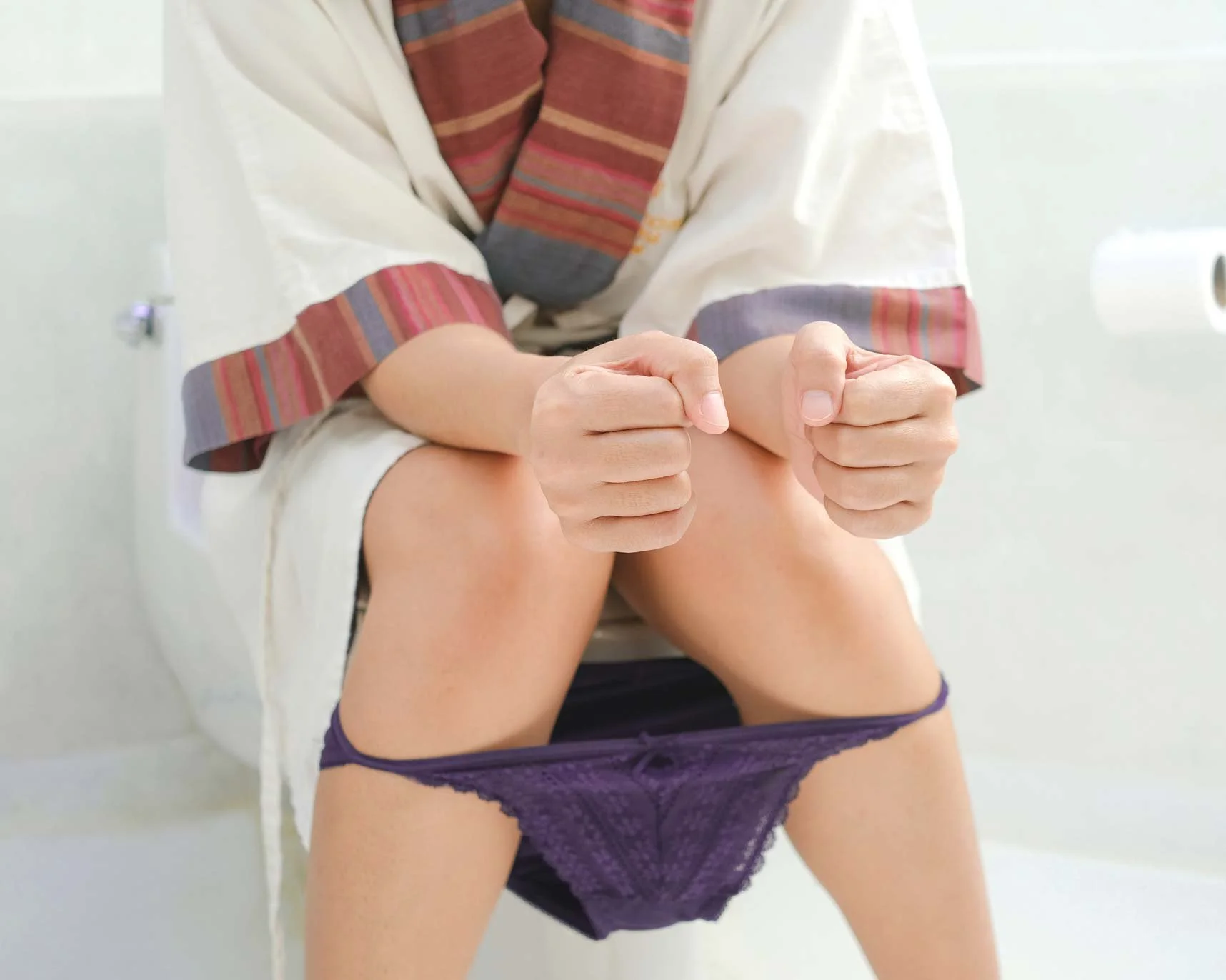Do You Push When You Pee?
Do you push when you pee? Are you supposed to push when you pee? These are all good questions!
When I ask my patients if they push while peeing, oftentimes, they will say they’re not sure or that they don’t think so. Then, when I saw them for their next appointment a week later, they had a revelation that they indeed are pushing when peeing.
In this article, we review why forcing urine out is bad, and how to solve the issue.
Is It Bad to Push While You Pee?
Yes, pushing when you urinate isn’t a healthy habit. It places unnecessary pressure on the pelvic floor, and doing this repeatedly throughout the day can add up over time.
This extra strain can lead to pelvic floor dysfunction and, over months or years, may even cause the bladder to prolapse, meaning it drops from its normal position. It can also contribute to urinary leakage during activities like coughing, laughing, sneezing, or exercising. In the long term, this pressure may lead to other issues such as urinary problems or hemorrhoids.
Why do people push when they pee?
There are a few reasons someone may push when they pee.
One reason people force out urine may be due to a bad habit. This can stem from trying to hurry up and spend less time in the bathroom for various reasons.
It could also be due to tight pelvic floor muscles and having trouble relaxing to let the urine flow out freely and fully. It might also be due to prolapsing of the bladder, causing difficulty when trying to fully empty.
How Can I Solve This Issue?
The solution is to simply stop pushing when you pee!
Focus on relaxing your pelvic floor muscles and allowing urine to flow naturally, without forcing it. You can try sitting comfortably, taking a few deep breaths, and gently leaning forward to help relax your pelvic area. Staying well-hydrated can also make urination easier.
If you still have trouble emptying your bladder without pushing, it may be a sign of tight pelvic floor muscles or other underlying issues. In that case, pelvic floor physical therapy can help retrain your muscles, improve bladder emptying, and reduce your risk of complications like prolapse or leakage. Your healthcare provider can also evaluate for any medical conditions that may be contributing to difficulty urinating.
Pelvic Floor Physical Therapy
Pelvic floor physical therapy focuses on strengthening and relaxing the muscles that support your bladder, uterus, and rectum. For both men and women who push while urinating, therapy can help retrain these muscles to relax properly so urine can flow naturally without straining.
Muscle relaxation techniques: Learning to release tension in tight pelvic floor muscles.
Bladder training: Gradually retraining the bladder to empty efficiently without straining.
Posture and breathing exercises: Improving overall pelvic alignment and reducing unnecessary pressure.
Pelvic floor PT is a specialized therapy used to help relieve pain and discomfort used for a wide range of different health conditions that stem from dysfunction of the pelvic floor muscles.
If you are struggling with pushing when you pee and want to solve this problem, speak to one of our pelvic floor therapists in Columbia today!


